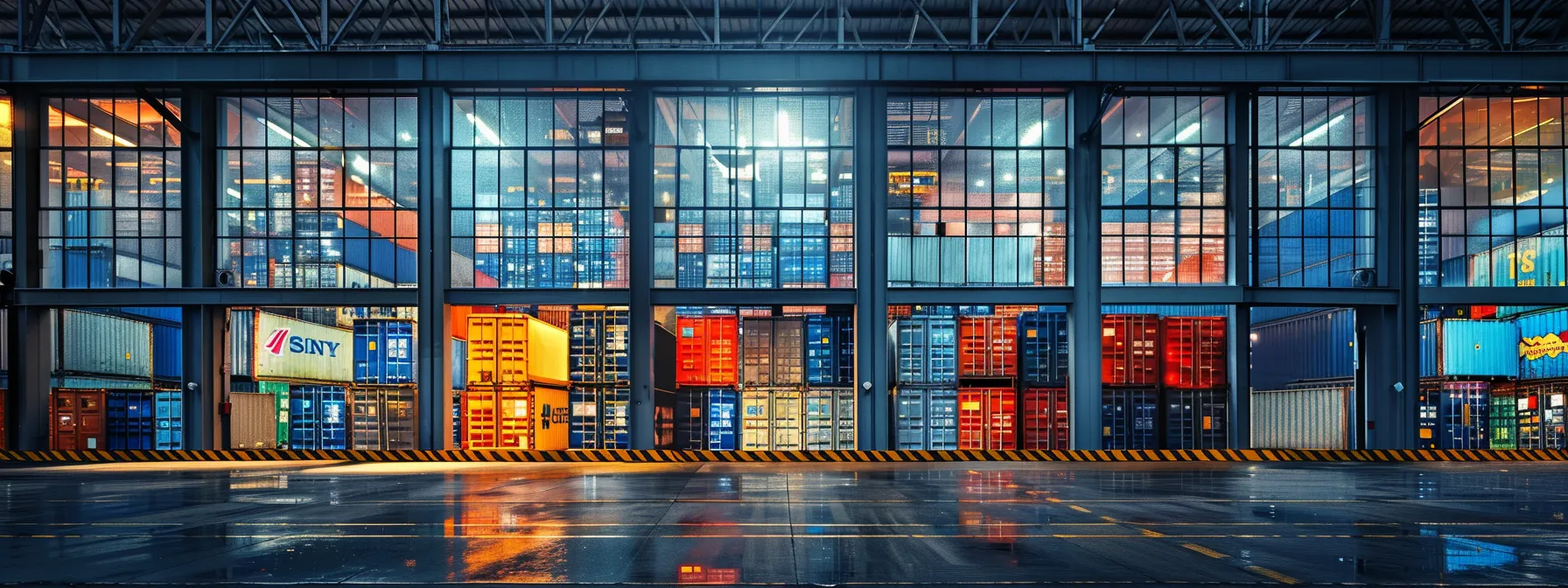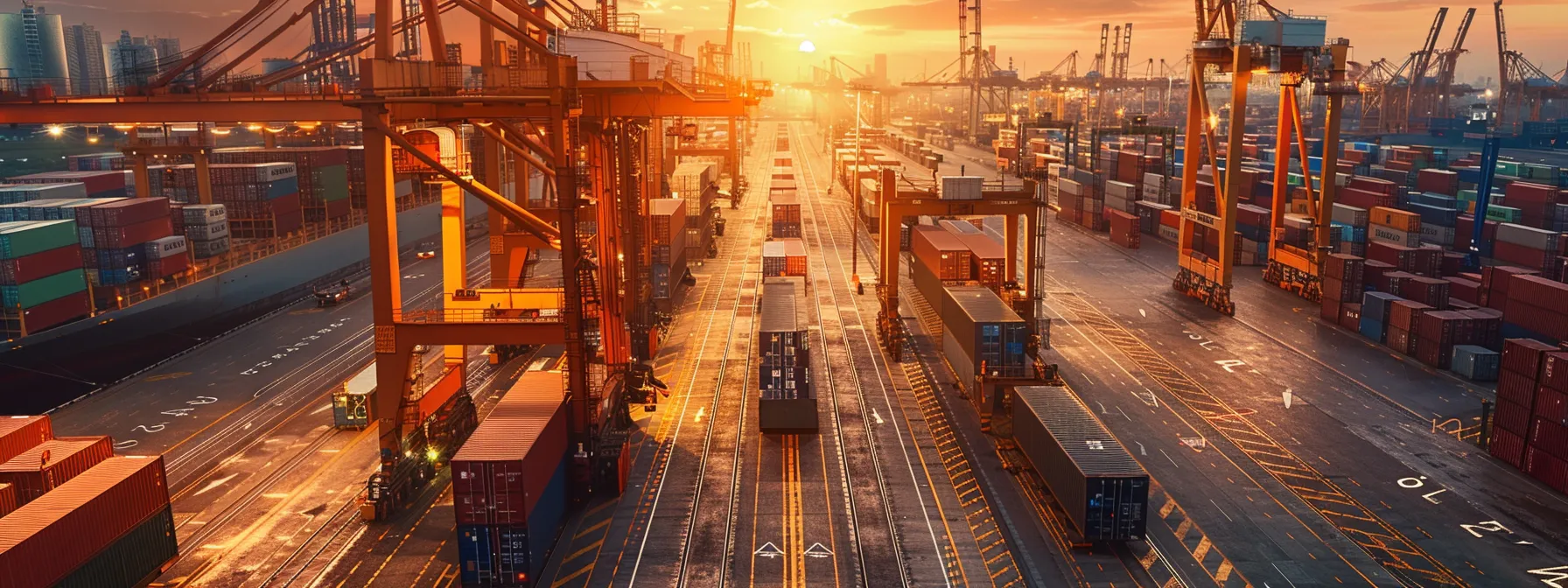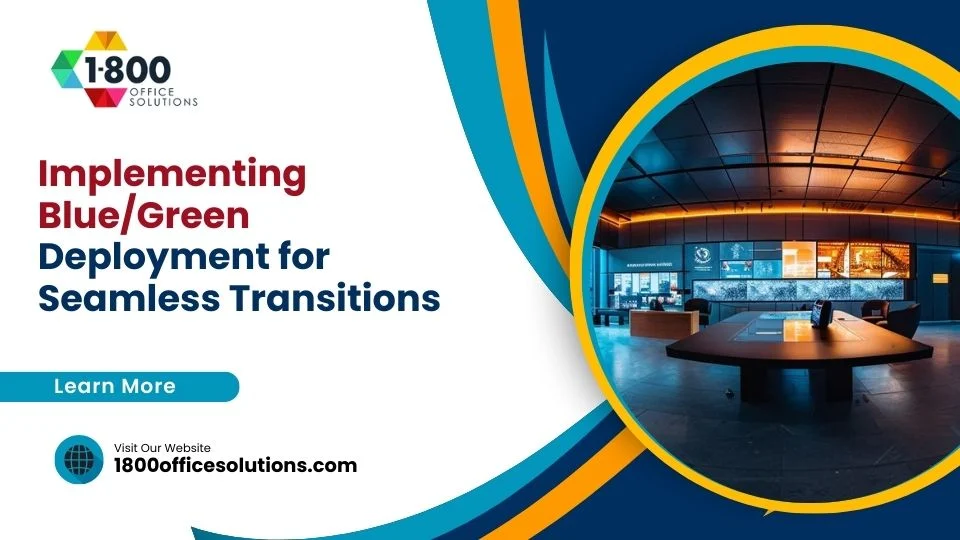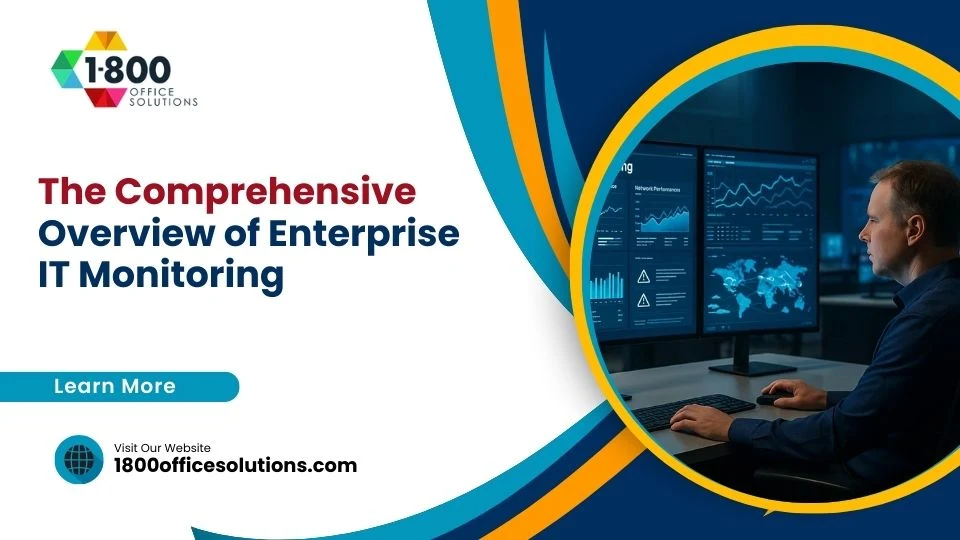Container Management Solutions for Modern Challenges
Container management is a key factor in streamlining office operations and IT services. This article outlines core components, best practices, and challenges businesses face when managing containers. Readers will learn how effective container management boosts computer performance, supports smooth operating system functions, and makes the most of artificial intelligence and cloud computing for efficient discovery of issues. With 40 years of industry experience, 1800 Office Solutions offers insights that help businesses overcome common equipment management problems.
Key Takeaways
- container management defines methods for deploying and monitoring containerized applications
- different system types offer control, scalability, and ease for container operations
- automation and precise resource allocation improve overall system performance
- security measures and compliance practices reduce operational risks in container management
- integration with supply chain processes supports effective data tracking and resource optimization
Defining Container Management and Its Key Components

This subsection offers an overview of container management definitions, system types, and core functions. It covers elasticity in containers along with load balancing strategies, virtualization techniques, and ansible automation, providing key practical insights into the subject.
Overview of Container Management Definitions
Container management definitions refer to the methods used to deploy, control, and monitor containers that run on a server. This discipline focuses on managing pods and reducing risk while providing essential information for optimized system performance in solutions like amazon eks:
- Clear explanation of container deployment
- Efficient server resource management
- Effective pod orchestration
- Risk mitigation techniques
- Reliable information flow
A precise definition of container management assists system architects in designing effective and secure workflows. The framework offers practical guidance to maintain a stable server environment, ensuring that risk is minimized and critical information is available through platforms such as amazon eks.
Types of Container Management Systems
Container management systems vary in structure, including self-managed, cloud-based, and hybrid options that support containerized applications and provide developers with tools modeled on efficient shipping practices and ocean-inspired scalability through modern technology:
Business owners and technology professionals gain a measurable advantage when they select a container management system that reduces operational challenges and supports the deployment of containerized applications with efficient shipping capacity. Industry experts recommend careful evaluation of each system type to match organizational needs and ensure robust performance across diverse operational settings.
Core Functions of Container Management
Container management fulfills key functions that ensure efficient distribution of software components while streamlining resource allocation and storage processes. The system employs automation to reduce manual tasks and align devops practices with real-time operational needs:
The approach focuses on clear, actionable workflows that leverage automation and precise resource control to support robust software operations. Business professionals trust these functions to improve container performance and assist devops teams in meeting operational targets efficiently.
The Importance of Container Management in Modern Industries

Container management strengthens operational efficiency by balancing workloads and providing effective orchestration with api integration using amazon elastic compute cloud. It reduces costs by optimizing equipment use and improves inventory accuracy with precise tracking. The approach offers practical insights that benefit business owners through streamlined operations and effective resource control.
Enhancing Operational Efficiency
Modern container management leverages platforms such as kubernetes and red hat openshift to streamline resource scheduling and automate the distribution of software components. A skilled manager applies machine learning techniques to monitor workload trends and coordinate the movement of cargo-like data, resulting in smoother operational workflows.
Business operations experience improved performance when container systems standardize task allocation and reduce manual adjustments. A knowledgeable manager uses machine learning methods to balance system demands and oversee the precise handling of cargo, ensuring that key processes run with maximum efficiency using kubernetes and red hat openshift.
Reducing Costs Through Effective Management
Effective container management offers clear cost reduction by automating processes that influence accounts payable while strengthening security protocols. Systems that incorporate open source platforms contribute to streamlined logistics and improved infrastructure, which provides business owners with reliable cost-saving measures:
- Automated accounts payable workflows
- Refined security measures
- Coordinated logistics operations
- Optimized infrastructure use
- Integration of open source tools
Efficient container management minimizes redundant expenses and supports standardized resource allocation across operations. Experts affirm that this systematic approach yields measurable savings and addresses business needs through focused investment in accounts payable, security, logistics, infrastructure, and open source solutions.
Improving Inventory Accuracy and Tracking
Container management improves inventory tracking by consolidating essential data from a single source and creating a unified ecosystem for asset monitoring. This method streamlines the process of verifying pricing, supporting scalability and ensuring accurate data tracking:
- Consolidation of information from a single source
- Formation of a unified ecosystem for asset oversight
- Streamlined pricing verification processes
- Scalable solutions to accommodate growth
- Continuous updates ensuring reliable data
Industry experts use container management to automate updates and reduce manual reconciliation challenges. They rely on real-time data reporting that reinforces an integrated ecosystem, refines pricing strategies, and supports scalability to address operational requirements effectively.
Container Management Best Practices

Implementing automation and technology, establishing standard operating procedures, and performing regular audits and performance monitoring are essential in container management. This overview draws on linux expertise, rancher and openshift strategies, and insights from the magic quadrant to guide construction of efficient workflows, setting the stage for detailed practice discussions.
Implementing Automation and Technology
Implementing automation and technology streamlines container management best practices by reducing manual tasks and ensuring timely system updates. Experts incorporate container security measures into daily workflows to lower cost and build a secure network that supports ongoing innovation in managing resources.
Technology integration simplifies routine procedures and fortifies container security for reliable operations. This approach cuts cost while maintaining a secure network environment, fostering innovation that meets business requirements and improves overall efficiency.
Establishing Standard Operating Procedures
Establishing standard operating procedures improves container management and ensures that each application configuration follows clear guidelines through a consistent interface, where GitHub repositories and cloud run setups support the process:
- Define roles and responsibilities to maintain organized documentation
- Utilize GitHub for tracking procedure updates and modifications
- Implement cloud run to schedule routine application deployments
- Maintain an accessible interface to monitor management activities
Companies that adopt these procedures experience fewer disruptions and better system clarity by following a structured approach that addresses daily challenges while keeping operations efficient and secure.
Regular Audits and Performance Monitoring
Regular audits and performance monitoring ensure container management processes remain efficient and secure. Experts review account activity and assess Microsoft Azure performance while verifying storage containers and supply chain data, using insights from Gartner to fine-tune operations:
- Examine account usage and permissions
- Assess performance metrics in Microsoft Azure
- Monitor storage containers for optimal function
- Review supply chain integration points
- Apply guidance from Gartner studies
These practices help system managers identify and resolve issues promptly, leading to smoother workflows and reduced risks for business operations. A proactive approach to performance reviews supports reliable system health and meets the needs of key stakeholders.
Challenges in Container Management

Addressing security concerns, managing compliance with customs and regulations, and overcoming integration issues are key challenges in container management. Experts stress the importance of cloud native technologies, enhanced visibility, reduced carbon footprint, and continuous learning. Upcoming topics offer practical measures to tackle these challenges and support efficient operations.
Addressing Security Concerns
Container management challenges have become more significant as data centers face evolving security threats. Industry practitioners use container management software to secure communication channels and monitor each kubernetes container, while also incorporating red hat protocols to limit vulnerabilities.
System administrators enforce strict policies that restrict unauthorized access and safeguard sensitive data across multiple network nodes. This careful strategy integrates specific practices:
- Regularly update container management software across all systems
- Apply red hat security patches to strengthen defenses
- Establish reliable communication channels within the data center
- Conduct periodic inspections of each kubernetes container
- Implement proactive risk assessments throughout the environment
Managing Compliance and Regulations
Managing compliance and regulations in container management plays a significant role in upholding secure operations and meeting current industry standards. A well-designed kubernetes service can enable a cloud native framework that streamlines audit procedures and reinforces oversight for daily operations.
Regular evaluation of regulatory policies within container management helps organizations reduce the risk of compliance issues while maintaining efficient operations. Integrating a dedicated kubernetes service in a cloud native environment can enable business processes to align with strict requirements and safeguard overall system governance.
Overcoming Integration Issues
Overcoming integration issues in container management requires a systematic approach that unifies various platforms, including docker, microservices, aws deployments, and hybrid environments. Addressing these challenges effectively offers a competitive advantage by aligning disparate systems for stable and efficient operations:
Organizations overcome integration challenges by applying focused testing and configuration monitoring across container platforms. By regularly reviewing performance metrics and adjusting synchronization methods, they simplify microservices coordination and secure a competitive advantage in docker and aws environments.
The Role of Container Management in Supply Chain Optimization

Container management aligns with supply chain goals by streamlining operations. This section outlines how effective stakeholder collaboration and reliable data usage support better decision-making, improve coordination, and ensure system efficiency. The following topics provide practical insights to help businesses optimize container management within their supply chains.
Aligning Container Management With Supply Chain Goals
Organizations align container management with supply chain goals to streamline resource allocation and improve overall efficiency. The system integrates real-time data into operations, allowing decision-makers to monitor inventory and logistics performance effectively.
Strategic application of container management supports smooth scheduling and consistent workflow across the supply chain. This approach provides clear insights that help reduce operational delays and maintain steady progress in business activities.
Collaborating With Stakeholders for Better Outcomes
Successful stakeholder cooperation plays a crucial role in refining container management strategies within supply chain optimization efforts. Business leaders experience smoother operations when communication channels remain clear and responsibilities are well defined.
Industry practitioners build better outcomes by integrating stakeholder perspectives into container management frameworks. A detailed breakdown of roles and benefits is provided below:
Utilizing Data for Informed Decision-Making
Container management systems supply critical data that supports informed decision-making in supply chain optimization. This real-time information guides system managers as they adjust workflows and allocate resources effectively, improving operational accuracy and efficiency.
Industry experts rely on continuous data from container management tools to fine-tune processes and reduce disruptions across supply chains. Clear insights from performance metrics enable organizations to address challenges promptly and maintain a consistent flow throughout their operations.
Future Trends in Container Management

Future trends in container management feature improved approaches in technology and automation, increased focus on environmental sustainability, and the integration of smart container systems with IoT. These topics offer practical insights and expert guidance that support efficient operations and informed decision-making, ensuring that modern systems remain reliable and adaptable.
Advancements in Technology and Automation
Recent progress in technology integrates efficient automation tools into container management systems, enabling system managers to assign resources precisely. These innovations reduce manual tasks and maintain stable performance in containerized environments.
Modern automation solutions offer real-time adjustments and detailed monitoring, ensuring faster deployment cycles and improved system reliability. System professionals apply these advancements to meet operational needs and align container operations with business goals.
Environmental Considerations and Sustainability
Container management experts integrate sustainable practices to lower system emissions and conserve resources. They adopt energy-saving protocols, efficient cooling techniques, and resource conservation measures to support long-term sustainability:
- Adoption of energy-efficient hardware setups
- Integration of smart cooling systems
- Implementation of low-power operational methods
- Application of waste minimization practices
These strategies enable system operators to maintain reliable performance while achieving cost savings. Regular monitoring and scheduled updates ensure container management systems comply with emerging environmental standards and continue to meet operational requirements.
The Shift Towards Smart Containers and IoT Integration
Smart containers connected with IoT devices mark a significant shift in container management, offering real-time monitoring and the ability to adjust resources immediately. System managers benefit from increased transparency and direct access to performance metrics, which supports prompt and accurate operational decisions.
The integration of smart containers and IoT solutions simplifies the oversight of complex systems by automating routine checks and minimizing manual interventions. Business leaders experience improved operational efficiency and enhanced control over resource allocation as these technologies streamline processes and support informed decision-making.
Frequently Asked Questions
What is container management and its core components?
Container management refers to the administration of containerized applications through specialized solutions that automate deployment, updates, and scaling, ensuring efficient operations and secured environments. It streamlines IT processes by providing a systematic approach to handling containerized workloads.
Core components include a container runtime responsible for operations, orchestration services that schedule and scale tasks, an image registry for storing container images, and networking systems that facilitate secure communications, with monitoring and configuration tools rounding out the framework.
How does container management serve modern industries effectively?
Container management streamlines operational processes for modern businesses, facilitating smooth workload distribution and resource allocation. This method supports secure and adaptable technology infrastructure, aligning with the approach 1800 Office Solutions has employed over 40 years in leasing and repairing office equipment.
By managing containers, organizations achieve organized system deployment and easy control over digital assets. This structured method mirrors the reliability of 1800 Office Solutions, which offers trusted lease programs for printers, scanners, copiers, and fax machines, ensuring consistent performance for business owners.
Which practices ensure successful container management performance?
Successful container management performance arises from setting clear configuration standards, automating regular system checks, and verifying security measures. Regular platform updates and efficient resource allocation are implemented in managed IT setups, mirroring the detailed maintenance 1800 Office Solutions employs when servicing office equipment.
Adoption of precise orchestration tools and attentive monitoring supports a stable operational environment. Consistent review, careful adjustments, and dedicated support align container practices with reliable performance standards seen in 1800 Office Solutions, ensuring continuity across managed IT services and office technology operations.
What challenges emerge during container management operations?
Container management operations present obstacles in consistent deployment, resource allocation, and security tracking. Adjusting to rapidly changing workloads and version updates often introduces configuration variations and performance issues. The complexity of container orchestration demands careful oversight by experienced teams.
Robust monitoring and proactive troubleshooting reduce downtime risks. Managed IT services focus on these issues to guard cybersecurity threats and maintain streamlined operations. Clear policies and skilled support help businesses keep container environments secure and efficient.
How does container management optimize supply chain functions?
Container management streamlines logistics by centralizing tracking and coordination. It groups equipment shipments and scheduled maintenance tasks, reducing manual errors and delays in transport. This process results in efficient asset movement throughout each phase of the supply chain.
Office equipment providers use container management to align IT services with service delivery. They obtain improved asset oversight that supports optimal allocation and timely repair scheduling, ensuring dependable operations while minimizing disruptions across device networks.
Conclusion
A comprehensive understanding of container management empowers organizations to streamline workflows and secure resource distribution. Business operations benefit when automation reduces manual tasks and supports timely updates across systems. This approach drives cost savings, strengthens system stability, and simplifies asset tracking within complex environments. Decision-makers use these insights to align technical solutions with business objectives, fostering sustainable growth and reliable operational performance.










